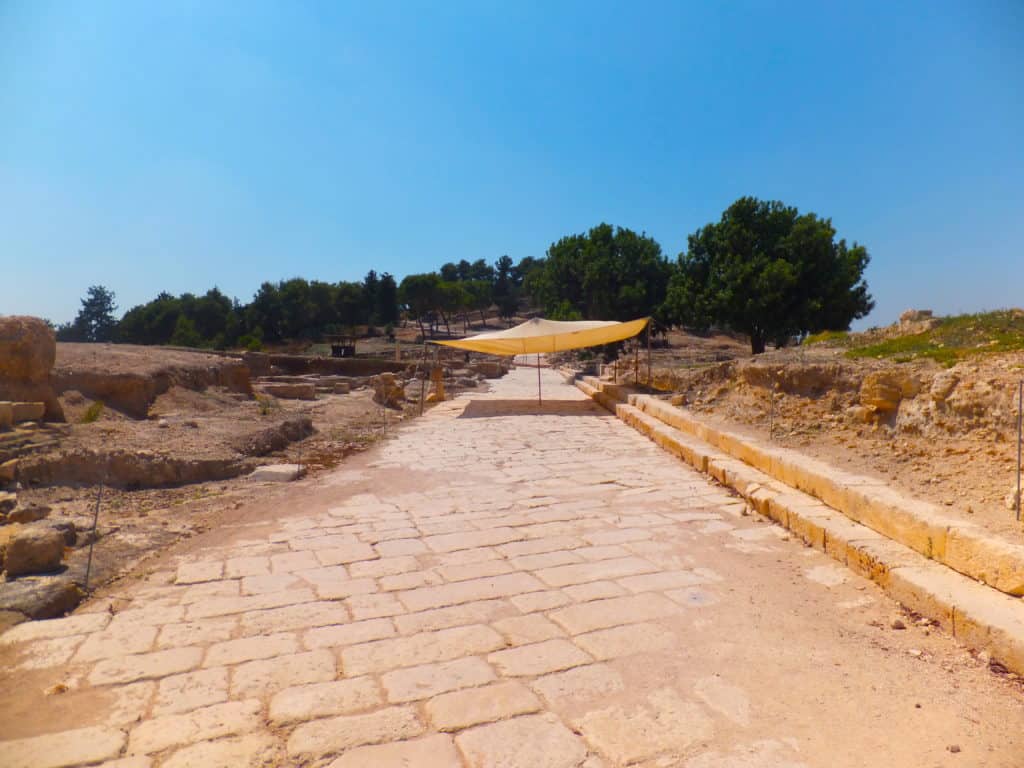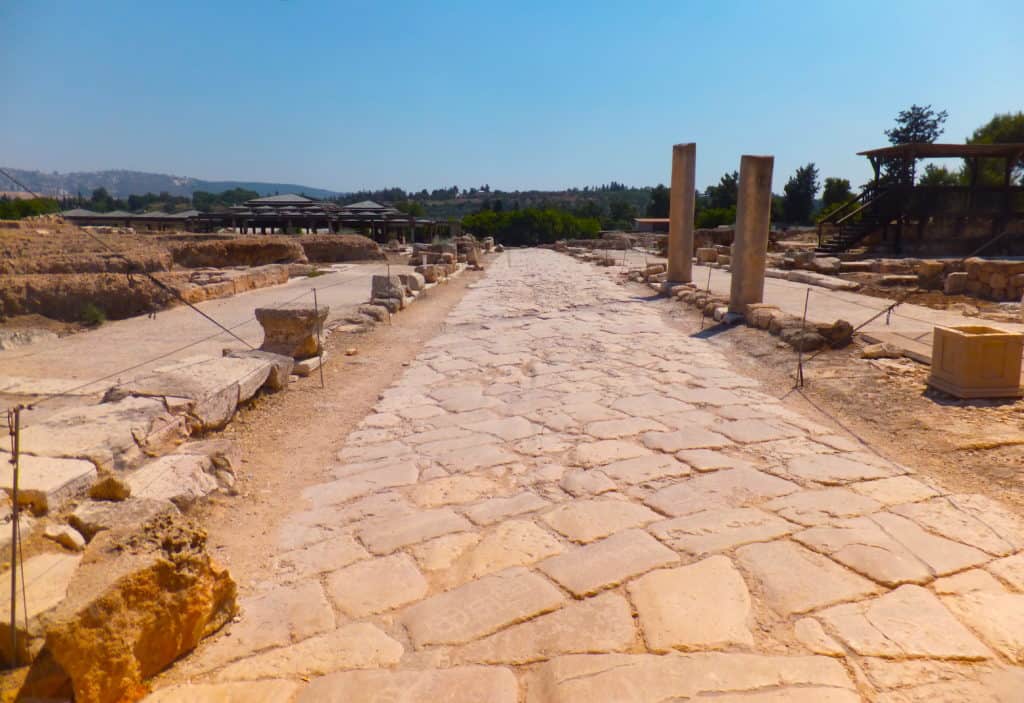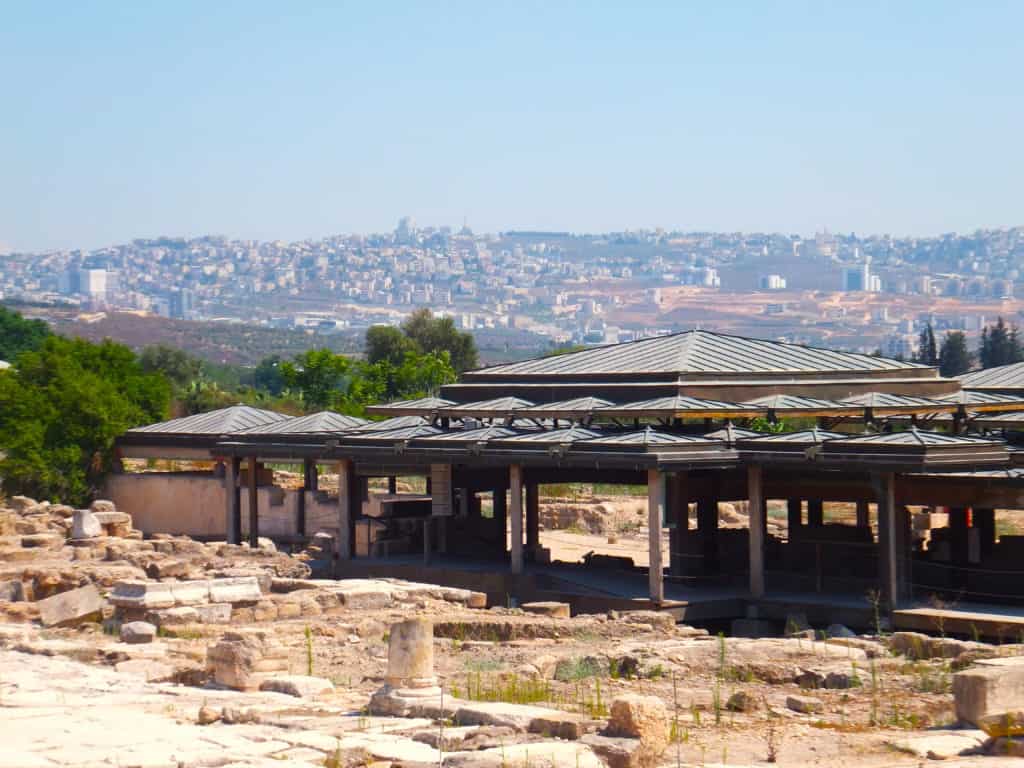You sometimes hear it said that Jesus was a country boy from a tiny village in Galilee.
That is true, sort of, but it’s a bit misleading.
Yes, Jesus grew up in Nazareth, a small village covering maybe 10 acres. At that time, Nazareth had a population of somewhere around 200, give or take. It might possibly have had as many as 400 souls. A small village, typical in first-century Galilee.
But Nazareth was also only about 3 miles away from the big city of Tsipori. When Jesus was a boy, Tsipori was the capital city of Galilee. (When Jesus was in his twenties, the capital was moved to Tiberias, a city on the Sea of Galilee.)
All of this means that Jesus lived only about an hour’s walk away from the big city.
But is there any reason to think Jesus ever took that walk? Yes, there is …
A Builder, Not a Farmer
It’s useful to remember that Jesus was probably a builder. The word used in Greek is “tekton,” which means a craftsman in wood, metal, or stone. In English Bibles, this word is usually translated as “carpenter.” But “tekton” is broader than a carpenter, and it’s a word often used for builders.
By the way, we know Jesus was a tekton from only a single text in the New Testament, Mark 6:3. The parallel text in Matthew identifies his father as a tekton.
It’s likely that most of the villagers in Nazareth were farmers, working their small plots of land around the village. Jesus wasn’t a farmer, because he had no choice. His father wasn’t a farmer, and if you don’t inherit land, you can’t farm it.
If Jesus was a builder, what did he build? It’s a reasonable guess that he built or helped build houses in his own village. But there was a limited amount of that sort of work. Nazareth probably had two or three dozen family houses. That’s not a lot for a builder to do.
But Tsipori, on the other hand, had an enormous amount of work available. The reason is simple.
Rebuilding Tsipori
According to the Jewish historian Josephus, Tsipori was attacked and destroyed in the years shortly after King Herod the Great died. Jesus would have been a very young boy at this time.
Soon after that, Herod Antipas, one of the sons of Herod the Great, was given rulership over Galilee. Antipas rebuilt Tsipori and he made it the capital of Galilee for about twenty years.
Rebuilding a city takes workers, and Herod Antipas hired a lot of builders.
So it’s possible that one of the builders he hired was Joseph, a tekton from Nazareth. Nobody can prove this, but it’s at least possible.
Can we say more than merely possible? Yes, we can.
Too Much of a Good Thing
It’s very, very likely that Joseph trained Jesus and his four brothers in the craft of the tekton. (The texts in Mark and Matthew that I linked to above name his four brothers as James, Joses, Simon, and Judas.) For more thoughts on these brothers, see my post The Mysterious Brothers of Jesus.
Assuming this one family in Nazareth had 6 healthy men, all working as tektons, they probably represented somewhere between 5% and 10% of all the able-bodied men in the village. It’s a reasonable guess that this family had too much of a good thing—there probably wasn’t enough work for them all in Nazareth.
And that’s why I think it quite likely that some members of the family found work in Tsipori. When there was no work to do in Nazareth, it would just make sense to walk on over to Tsipori and hire yourself out for the day. There was plenty of work in Tsipori, and a good craftsman could get hired on the spot.
Jesus and his family had a very good reason to do that.
An Advantage for Jesus
Working as a day-laborer was not a high-prestige job. But it gave Jesus one huge advantage over his fellow villagers, most of whom were farmers. A subsistence farmer is tied to his land. He can’t simply take off for weeks at a time, leaving his land and his animals unmanaged.
But a day-laborer can. In one day, a day-laborer could earn one dinar, enough to feed 12 people for a day. A family of six hard-working men, all working as day-laborers, could earn 6 dinars a day. But they’d only need 1 dinar per day for food for the entire family.
What did they do with the rest? They saved it. And when it came time for one of the major feasts, they could simply walk away from the village for several weeks. No crops to worry about. No animals. No worries.
Being day-laborers gave Jesus and his family the freedom to travel. And we know they used it. The four gospels make it clear that Jesus and his family went to Jerusalem often for the major feasts—Passover in the spring, Tabernacles in the fall, and possibly also Pentecost in early summer. Each of these feasts took weeks to go to, when you account for travel time. (It took at least 4 or 5 days to walk from Nazareth to Jerusalem, each way.)
Jesus and his family apparently had that time, because we know they took that trip often. Which meant they must have had the money to make the trip.
And where did they get that money? It’s just a fact that there’s a lot more money in a city than in a village.
I think they got the money working in Tsipori. I think Jesus knew this city well.
What Was Tsipori Like?
Tsipori at the time of Jesus was a thriving city with about 10,000 people. Herod Antipas lived there and ruled Galilee.
Tsipori is built on a hill, and there was a fortress at the top of the hill. (Jesus once observed that “a city built on a hill cannot be hid,” and he might well have been thinking of Tsipori when he said it.)
Tsipori had a very large system of cisterns for holding water. The city covered somewhere between 100 and 150 acres, and it was probably a walled city, or at least parts of it were walled.
I’ve visited Tsipori a couple of times. Nobody lives on the site now. It’s a major archaeological park, and it’s been very extensively excavated. If you go to Israel, I highly recommend a stop at Tsipori. It’ll give you a great sense of what the city was like in the first century. My wife and I went to Tsipori again this past summer.
Here is a picture I took of the main city street of Tsipori with the citadel in the background:

Here is a picture of the main cross street in Tsipori looking south:

And here’s a picture of some of the houses in Tsipori, with Nazareth in the background. (Nazareth today is a largish city with a population of about 80,000 people.)

This summer when I walked through the streets of Tsipori, I looked around and asked myself which of these houses Jesus and his family might have helped build. It’s a question I can’t answer. But I think it’s reasonable to believe that he worked on some of them.

You may not remember me, but I am that rabid fan of the CoG series, I used to harass you to self-publish the rest of the series. Is the CoG series dead? If so why? If so may you stub your toe everyday when you wake up.
All joking aside, I can’t wait for your Crown of Thorns series.
Is there a release date?
Hi Wesley:
Good to hear from you! City of God is not dead. Far from it. However, I can work on only one gigantic project at a time, and I think that project right now should be Crown of Thorns.
I might be wrong, but all I can do is pursue the project I think is best for now. When Crown of Thorns is done, I’ll be back onto City of God with the benefit of enormous amounts of new research.
As for a release date, I’ll release it as soon as I get the last 3 maps drawn and as soon as my cover designer completes the cover. There’s nothing else holding it up, but both of those need to be finished.
[…] one thing, we know that the two largest cities in Galilee at the time of Jesus were Tsipori and Tiberias. Each had a population of only about 10,000 people, based on their areas. So all the […]